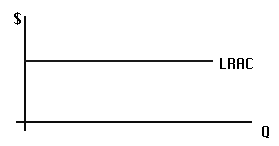
КАТЕГОРИИ:
Архитектура-(3434)Астрономия-(809)Биология-(7483)Биотехнологии-(1457)Военное дело-(14632)Высокие технологии-(1363)География-(913)Геология-(1438)Государство-(451)Демография-(1065)Дом-(47672)Журналистика и СМИ-(912)Изобретательство-(14524)Иностранные языки-(4268)Информатика-(17799)Искусство-(1338)История-(13644)Компьютеры-(11121)Косметика-(55)Кулинария-(373)Культура-(8427)Лингвистика-(374)Литература-(1642)Маркетинг-(23702)Математика-(16968)Машиностроение-(1700)Медицина-(12668)Менеджмент-(24684)Механика-(15423)Науковедение-(506)Образование-(11852)Охрана труда-(3308)Педагогика-(5571)Полиграфия-(1312)Политика-(7869)Право-(5454)Приборостроение-(1369)Программирование-(2801)Производство-(97182)Промышленность-(8706)Психология-(18388)Религия-(3217)Связь-(10668)Сельское хозяйство-(299)Социология-(6455)Спорт-(42831)Строительство-(4793)Торговля-(5050)Транспорт-(2929)Туризм-(1568)Физика-(3942)Философия-(17015)Финансы-(26596)Химия-(22929)Экология-(12095)Экономика-(9961)Электроника-(8441)Электротехника-(4623)Энергетика-(12629)Юриспруденция-(1492)Ядерная техника-(1748)
Long Run Average Cost in General
|
|
|
|
More realistically, an investment planner will have to choose between many different plant sizes or firm scales of operation, and so the long run average cost curve will be smooth, something like this:

As shown, each point on the LRAC corresponds to a point on the SRAC for the plant size or scale of operation that gives the lowest average cost for that scale of operation.
Returns to Scale
In our pictures of long run average cost, we see that the cost per unit changes as the scale of operation or output size changes. Here is some terminology to describe the changes:
– average cost decreases as output increases in the long run = increasing returns to scale = decreasing cost
– average cost is unchanged as output varies in the long run = constant returns to scale = constant costs
– average cost increases as output increases in the long run =decreasing returns to scale = increasing costs
Here are pictures of the average cost curves for the three cases:
1. Increasing returns to scale = decreasing cost
 Economists usually explain "increasing returns to scale" by indivisibility. That is, some methods of production can only work on a large scale – either because they require large-scale machinery, or because (getting back to Adam Smith, here) they require a great deal of division of labor. Since these large-scale methods cannot be divided up to produce small amounts of output, it is necessary to use less productive methods to produce the smaller amounts. Thus, costs increase less than in proportion to output – and average costs decline as output increases.
Economists usually explain "increasing returns to scale" by indivisibility. That is, some methods of production can only work on a large scale – either because they require large-scale machinery, or because (getting back to Adam Smith, here) they require a great deal of division of labor. Since these large-scale methods cannot be divided up to produce small amounts of output, it is necessary to use less productive methods to produce the smaller amounts. Thus, costs increase less than in proportion to output – and average costs decline as output increases.
Increasing Returns to Scale is also known as "economies of scale" and as "decreasing costs." All three phrases mean exactly the same.
2. Constant returns to scale = constant costs
 We would expect to observe constant returns where the typical firm (or industry) consists of a large number of units doing pretty much the same thing, so that output can be expanded or contracted by increasing or decreasing the number of units. For example, one machinist used one machine tool to do a series of operations to produce one item of a specific kind – and to double the output you had to double the number of machinists and machine tools.
We would expect to observe constant returns where the typical firm (or industry) consists of a large number of units doing pretty much the same thing, so that output can be expanded or contracted by increasing or decreasing the number of units. For example, one machinist used one machine tool to do a series of operations to produce one item of a specific kind – and to double the output you had to double the number of machinists and machine tools.
Constant Returns to Scale is also known as "constant costs." Both phrases mean exactly the same.
3. Decreasing returns to scale = increasing costs
 Decreasing returns to scale are associated with problems of management of large, multi-unit firms. With think of a firm in which production takes place by a large number of units doing pretty much the same thing – but the different units need to be coordinated by a central management. The management faces a trade-off. If they don't spend much on management, the coordination will be poor, leading to waste of resources, and higher cost. If they do spend a lot on management, that will raise costs in itself. The idea is that the bigger the output is, the more units there are, and the worse this trade-off becomes – so the costs rise either way. Decreasing Returns to Scale is also known as "diseconomies of scale" and as "increasing costs". All three phrases mean exactly the same.
Decreasing returns to scale are associated with problems of management of large, multi-unit firms. With think of a firm in which production takes place by a large number of units doing pretty much the same thing – but the different units need to be coordinated by a central management. The management faces a trade-off. If they don't spend much on management, the coordination will be poor, leading to waste of resources, and higher cost. If they do spend a lot on management, that will raise costs in itself. The idea is that the bigger the output is, the more units there are, and the worse this trade-off becomes – so the costs rise either way. Decreasing Returns to Scale is also known as "diseconomies of scale" and as "increasing costs". All three phrases mean exactly the same.
|
|
|
|
|
Дата добавления: 2014-01-11; Просмотров: 508; Нарушение авторских прав?; Мы поможем в написании вашей работы!